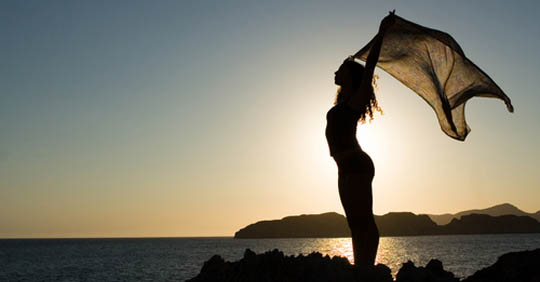



The United States wind energy industry blew away all previous records by installing more megawatts of generation capacity in 2015. Wind energy projects completed in 2015 account for about 42 percent of the entire power-producing capacity added in our nation last year. Installations of wind energy systems have increased as wind turbine technology has improved, incentives have increased and oil and electricity prices fluctuated. No longer confined to remote locations or wind farms, home wind energy has sprouted up in cities and suburbs with new and innovative wind generator designs like the vertically oriented Helix wind turbine (see video). Wind energy has come of age as a key component of the trend toward1s alternative energy sources like solar energy, biomass, hydroelectric, tidal and geothermal.
Wind energy is the conversion of wind power into electricity, using wind turbines. A wind turbine (installed on top of a tall tower) collects kinetic energy from the wind and converts it into electricity. Wind is a renewable energy source because the wind will blow as long as the sun shines.
A wind turbine converts kinetic energy (wind) into electrical energy. Wind turbines have a number of components, including blades, a shaft, a generator and a tower. The blades look like propellers, and are designed to catch the wind. The shaft is connected to the blades, which rotate as they turn with the wind. The shaft runs into the generator, which transforms the rotations of the shaft’s mechanical energy into electrical energy. All of these components are mounted on a tower to position the wind turbine for higher wind speeds.
A wind farm, or wind energy plant, is a cluster of wind turbines used to produce electric power. A large wind farm usually has from 24 individual turbines up to more than 100 scattered over hundreds of square miles. Wind farms are modular, adding more turbines as electricity demand increases. Wind farms are often located on existing cattle or agricultural acreage making efficient use of the land while supplying supplemental income for the landowner.
Environmentalists favor wind energy as an alternative to fossil fuels. Wind power is plentiful, renewable, widely distributed and clean.
Wind energy generation boasts low fuel costs and low production and maintenance costs. Wind energy consumes no fuel for continuing operation and has no emission directly related to electricity production. Operation does not produce carbon dioxide, sulfur dioxide, mercury, particulates, or any other type of air pollution, as fossil fuel power sources do.
The U.S. Department of Energy’s “Wind Powering America” program is a commitment to dramatically increase the use of wind energy in the United States. This initiative will establish new sources of income for American farmers, Native Americans, and other rural landowners, and meet the growing demand for clean sources of electricity.
Wind energy has been the fastest growing source of electricity generation in the world through the 1990s. However, the majority of this growth has been in Europe, where conventional energy costs are higher than those in the United States. With large untapped wind energy resources throughout the country and declining wind energy costs, the United States is now moving forward into the 21st century with an aggressive initiative to accelerate the progress of wind technology and further reduce its costs, to create new jobs, and to improve environmental quality. Wind Powering America will expedite the movement of wind technology into the mainstream of the U.S. electric sector.
Through Wind Powering America, the United States will achieve targeted regional economic development, enhance our power generation options, protect the local environment, and increase our energy and national security.
877-331-1235 | © Copyright DASolar.com.